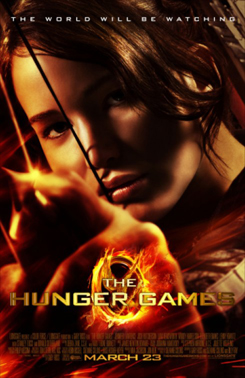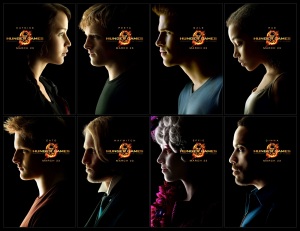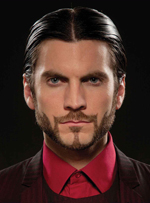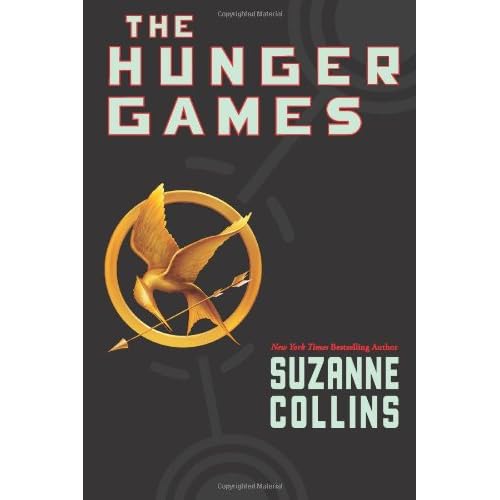Top Ten Tuesday is a weekly meme hosted by the fine folk over at The Broke and the Bookish. They created it because they are particularly fond of lists, and I’m participating because I am particularly fond of lists. Fancy that!
So the topic for this week’s list is:
Top Ten All-Time Favorite Characters In Books
There will be some minor spoilers in here, because some of the reasons I love these characters are kind of spoiler-y.
10. Cinna (The Hunger Games by Suzanne Collins) – Cinna is cool, composed, and suave. He’s a stylist, so you wouldn’t think of him as being a fighter. But he proves himself to be brave and devoted to a cause greater than himself. He fights intelligently, not with swords and fists, but with well-placed images that turn the tides of feeling in the Capitol and the Districts. He was the secret but powerful force behind the Girl on Fire.
9. Molly Weasley (First introduced in Harry Potter and the Sorcerer’s Stone by J.K. Rowling) – I would be remiss if I didn’t mention such a wonderful example of a mother. Molly Weasley is often in the background of the story, knitting horrible sweaters and fussing over her brood of red-headed children. But her fierce love and devotion for her family is never in doubt, and ultimately, she demonstrates the kind of power that comes from a mother’s love for her children. It’s nothing to be trifled with.
8. Robert Muldoon (Jurassic Park by Michael Crichton) – This is going to be short and sweet. Muldoon is freakin’ awesome, and if they’d all have listened to him from the beginning, dinosaurs wouldn’t have wound up eating most of them. And, unlike in the movie version, Muldoon is smart enough to not get eaten himself .
7. Valentine Wiggin (Ender’s Game and its sequels by Orson Scott Card) – In a world where children are turned into weapons by the military, Ender’s sister Valentine was rejected from the program for being too sympathetic and compassionate. But her intelligence was never the issue. Valentine’s game against her brother Peter is on a much smaller scale than Ender’s against the Formics, but she plays it well, proving what a shrewd strategist she really is. She also is Ender’s emotional center, the one member of his family who is always supportive and loving of him, no matter what he has done. She later proves her devotion to Ender when she accompanies him on his travels after the completion of the Game.
6. Jamie Fraser (The Outlander series by Diana Gabaldon) – If you like your romantic leading men big, burly, and Scottish, look no further than James Fraser. From the moment Claire Randall finds herself inexplicably transported from 1945 to 18th-century Scotland, Jamie is her savior, her protector, and her friend. He is innocent, funny and friendly while also being a strong warrior and leader. He’s not without his flaws, chief among them his fiery temper and fierce stubbornness. But ultimately, it’s his enduring love for Claire — a love that literally spans centuries — that makes him utterly endearing.
5. Peeta Mellark (The Hunger Games by Suzanne Collins) – I never really bought into the whole “Team Peeta”/”Team Gale” thing (in my opinion, Peeta’s biggest rival for Katniss’ affections was Katniss.) So my admiration for Peeta is not based on the fact that he’s just sooooooo dreamy. Peeta takes more mental and physical abuse than any other character in THG series (barring, of course, the ones who die). But his strength of character and his will to be true to himself ultimately prevail. He is gentle, kind, and full of hope in a world where all of those are in short supply; but he also demonstrates strength and power when the situation demands it. Katniss may be the focal point of THG, but in my mind, Peeta is the true victor.
4. Professor Remus Lupin (First introduced in Harry Potter and the Prisoner of Azkaban by J.K. Rowling) – As Harry’s only Defense Against the Dark Arts professor who is both qualified and competent, Professor Lupin’s teachings are instrumental in Harry’s fight against Voldemort. Additionally, in spite of Lupin’s internal struggles, he continues to be one of the main leaders of the Order of the Pheonix. He serves as mentor and protector of the Dynamic Trio, and ultimately helps Harry understand the power of sacrificial love.
3. Westley (The Princess Bride by William Goldman) – If you haven’t read The Princess Bride, go get yourself a copy and read it. Right now. The movie is great; the book is better. And however much movie Westley is the ultimate in swashbuckling romantic heroes, book Westley is even better. If you thought his survival in the Pit of Despair was impressive, wait until you see him in the Zoo of Death. “To the pain” indeed.
2. Nighteyes (Farseer Trilogy/Tawny Man Trilogy by Robin Hobb) – Nighteyes is protagonist FitzChivalry’s wolf companion for most of his journeys. Nighteyes is as you would expect a wolf to be: vicious, cunning, and fiercely loyal. But he is also surprisingly witty, refreshingly honest, and endearingly playful. Through all of Fitz’s misadventures, Nighteyes is there to ground him, support him, and be the voice of reason. In a series I loved full of characters I loved, Nighteyes was among the best. I’ve never felt so emotionally attached to an animal character, before or since.
1. The Fool (Farseer Trilogy/Liveship Traders Trilogy/Tawny Man Trilogy by Robin Hobb) – In Robin Hobb’s spectacular trilogy of trilogies, The Fool is the thread that ties them all together. He is an enigma wrapped in a puzzle wrapped in a cleverly worded and slightly biting riddle. And somehow, even though you never truly understand everything about him — even after 9 books — you come to know him. Introduced as a comical background character, The Fool ultimately evolves into one of the most complex and fascinating characters I’ve ever read. But despite the vast mystery that surrounds him, it’s hard to doubt or deny his friendship and devotion with Fitz, even in the face of unimaginable hardship.
Honorable Mentions (in no particular order):
Neville Longbottom, Hermione Granger, Professor McGonagall (Harry Potter)
Burrich (Farseer Trilogy/Tawny Man Trilogy)
Anne Shirley and Gilbert Blythe (Anne of Green Gables by L.M. Montgomery)
Elizabeth Bennet and Mr. Darcy (Pride and Prejudice by Jane Austen)
Kent McFuller (Before I Fall by Lauren Oliver)
Jo March (Little Women by Louisa May Alcott)
I may add more to this later. It’s too painful not to mention some of these great characters.







